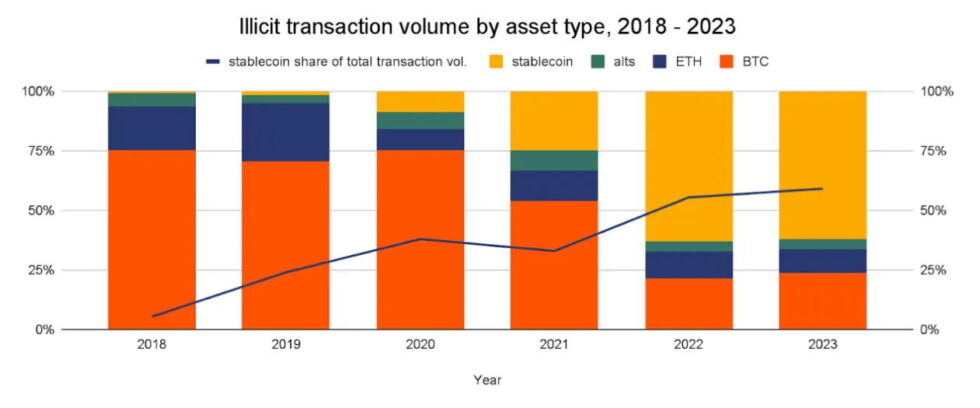Anjali Nair; Getty Photos
Stablecoins, cryptocurrencies pegged to a steady worth just like the US greenback, have been created with the promise of bringing the frictionless, border-crossing fluidity of bitcoin to a type of digital cash with far much less volatility. That mixture has proved to be wildly well-liked, rocketing the entire worth of stablecoin transactions since 2022 previous even that of Bitcoin itself.
It seems, nevertheless, that as stablecoins have turn out to be well-liked amongst respectable customers over the previous two years, they have been much more well-liked amongst a distinct type of consumer: these exploiting them for billions of {dollars} of worldwide sanctions evasion and scams.

As a part of its annual crime report, cryptocurrency-tracing agency Chainalysis in the present day launched new numbers on the disproportionate use of stablecoins for each of these large classes of illicit crypto transactions during the last yr. By analyzing blockchains, Chainalysis decided that stablecoins have been utilized in totally 70 % of crypto rip-off transactions in 2023, 83 % of crypto funds to sanctioned nations like Iran and Russia, and 84 % of crypto funds to particularly sanctioned people and firms. These numbers far outstrip stablecoins’ rising general use—together with for respectable functions—which accounted for 59 % of all cryptocurrency transaction quantity in 2023.
In complete, Chainalysis measured $40 billion in illicit stablecoin transactions in 2022 and 2023 mixed. The biggest single class of that stablecoin-enabled crime was sanctions evasion. In reality, throughout all cryptocurrencies, sanctions evasion accounted for greater than half of the $24.2 billion in prison transactions Chainalysis noticed in 2023, with stablecoins representing the overwhelming majority of these transactions.
The attraction of stablecoins for each sanctioned folks and nations, argues Andrew Fierman, Chainalysis’ head of sanctions technique, is that it permits targets of sanctions to bypass any try and deny them a steady forex just like the US greenback. “Whether or not it is a person positioned in Iran or a nasty man making an attempt to launder cash—both manner, there is a profit to the steadiness of the US greenback that individuals need to acquire,” Fierman says. “Should you’re in a jurisdiction the place you do not have entry to the US greenback because of sanctions, stablecoins turn out to be an attention-grabbing play.”
As examples, Fierman factors to Nobitex, the biggest cryptocurrency alternate working within the sanctioned nation of Iran, in addition to Garantex, a infamous alternate based mostly in Russia that has been particularly sanctioned for its widespread prison use. Stablecoin utilization on Nobitex outstrips bitcoin by a 9:1 ratio, and on Garantex by a 5:1 ratio, Chainalysis discovered. That is a stark distinction from the roughly 1:1 ratio between stablecoins and bitcoins on a couple of nonsanctioned mainstream exchanges that Chainalysis checked for comparability.

Chainanalysis




